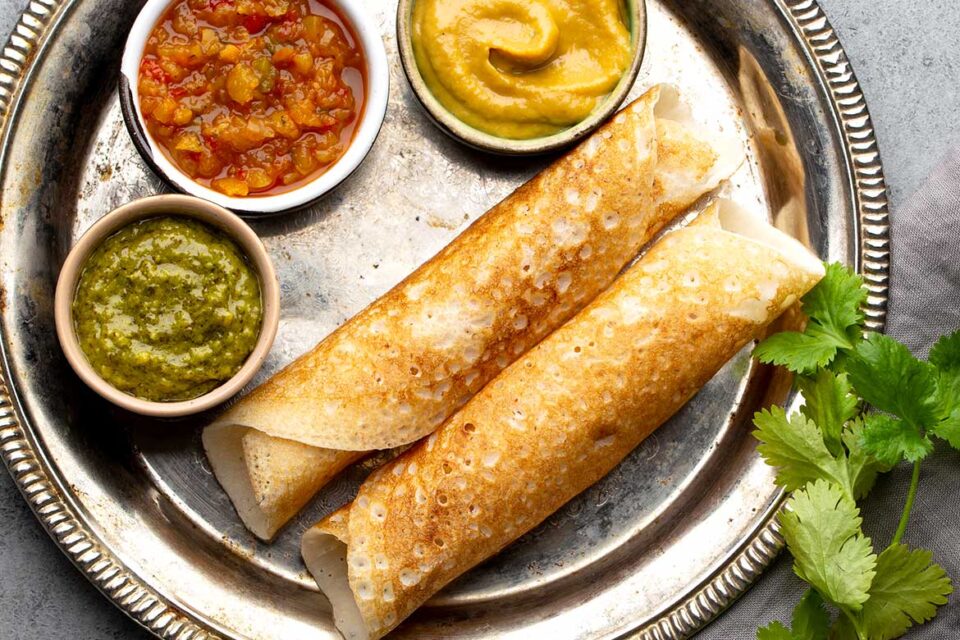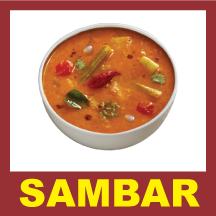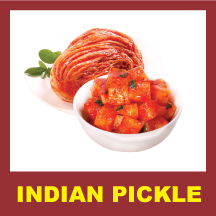
Dosa (food):
Dream International Hotel presenting South Indian Dish in Nepal :
Posted Date: 26 Aug 2023
A dosa is a thin savory pancake in South Indian cuisine made from a fermented batter of ground black lentils and rice. Dosas are served hot, often with chutney and sambar. Dosa is a signature dish in South India and Sri Lanka, and is popularly served in their respective restaurants around the world.

Dosas originated in South India, but its precise geographical origins are unknown. According to historian P. Thankappan Nair, dosa originated in the town of Udupi in present-day Karnataka. However, according to food historian K. T. Achaya, references in the Sangam literature suggest that dosa was already in use in the ancient Tamil country around the 1st century CE. Achaya states that the earliest written mention of dosa appears in literature of present-day Tamil Nadu, in the 8th century, while the earliest mention of dosa in the Kannada literature appears a century later.
In popular tradition, the origin of the dosa is linked to Udupi, probably because of the dish's association with Udupi restaurants. The Tamil dosai is softer and thicker. The thinner and crispier version of dosa was first made in present-day Karnataka.[5] A recipe for dosa can be found in Manasollasa, a 12th-century Sanskrit encyclopedia compiled by Someshvara III, who ruled from present-day Karnataka.
Dosa most likely arrived in Sri Lanka as part of the culture of Tamils native to the country.
After the Independence of India, South Indian cuisine became gradually popular in the North. In Delhi, the Madras Hotel in Connaught Place became one of the first restaurants to serve South Indian cuisine. It arrived in Mumbai with the Udupi restaurants in the 1930s.
.png)
Dosa is the anglicised name of a variety of South Indian names for the dish, for example dosai in Tamil, dosey in Kannada and dosha in Malayalam.
.png)
Dosa is high in carbohydrates and contains no added sugars or saturated fats. As its key ingredients are rice and black gram, it is a good source of protein. A typical homemade plain dosa without oil contains about 112 calories, of which 84% is carbohydrate and 16% protein. The fermentation process increases the vitamin B and vitamin C content.
.png)
A mixture of rice and black or green gram that has been soaked in water is ground finely to form a batter. Some add a bit of soaked fenugreek seeds. The proportion of rice to lentils is generally 3:1 or 4:1. The batter is allowed to ferment overnight, before being mixed with water to get the desired consistency. The batter then ladled onto a hot tava or griddle greased with oil or ghee. It is spread out with the base of a ladle or bowl to form a pancake. It can be made either to be thick like a pancake, or thin and crispy. A dosa is served hot, either folded in half or rolled like a wrap. It is usually served with chutney and sambar. The mixture of black grams and rice can be replaced with highly refined wheat flour or semolina.
.png)
Dosa can be stuffed with fillings of vegetables and sauces to make a quick meal. They are typically served with a vegetarian side dish which varies according to regional and personal preferences. Common side items are:



.png)
Masala dosa is a roasted dosa served with potato curry, chutney and sambar, while saada (plain) dosa is prepared with a lighter texture; paper dosa is a thin and crisp version. Rava dosa is made crispier using semolina. Newer versions include Chinese dosa, cheese dosa, paneer dosa, and pizza dosa.
.png)

